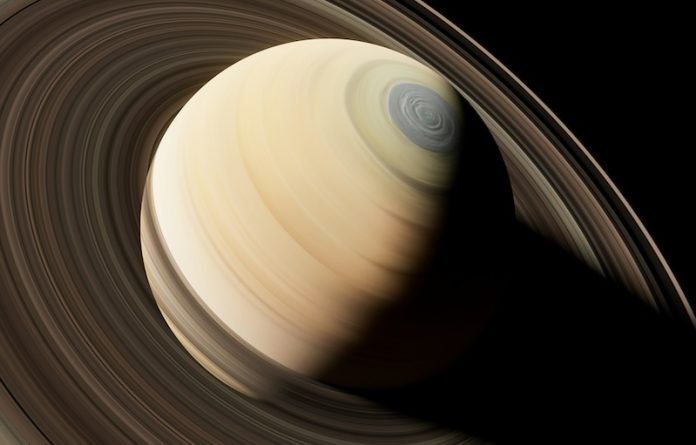
In a captivating study led by Rafael Silva from the Institute of Astrophysics and Space Sciences, with collaboration from the Faculty of Sciences of the University of Lisbon, scientists have taken a significant leap in understanding the atmospheric chemistry of Titan, Saturn’s largest moon.
This research, published in the journal Planetary and Space Science, has uncovered nearly one hundred new methane signatures in Titan’s atmosphere, shining a light on the complex chemical ballet that occurs on this distant moon.
Titan, unique among the moons in our solar system, boasts a dense atmosphere rich in nitrogen and methane. The interaction of sunlight with this atmosphere creates a fascinating array of organic molecules, some of which are also found on Earth and are crucial for life as we know it.
By analyzing the sunlight reflected off Titan’s atmosphere, the team was able to identify these methane signatures in the visible spectrum for the first time, marking a significant breakthrough in our ability to detect such molecules in other planetary atmospheres.
Moreover, the team’s research suggests the possible presence of the tricarbon molecule (C3) in Titan’s atmosphere, a discovery that, if confirmed, would mark the first time this molecule has been detected on a planetary body.
The implications of this finding are profound, as the tricarbon molecule could play a key role in the formation of complex carbon-based molecules, further deepening our understanding of Titan’s chemical complexity.
Titan’s atmosphere is likened to a giant chemical reactor, churning out a variety of complex organic compounds. This moon’s atmospheric conditions are thought to resemble those of early Earth, offering scientists a window into the chemical processes that may have contributed to the origin of life on our planet.
The presence of methane on Titan is particularly intriguing, as it suggests ongoing geological processes that replenish this gas, which is quickly destroyed by solar radiation.
The study not only sheds light on the chemistry of methane but also enhances our understanding of Titan’s atmospheric dynamics.
The identification of 97 new methane absorption lines in the visible spectrum is a testament to the power of high-resolution spectroscopy and the unique conditions present on Titan, where the extensive atmosphere allows for detailed observation of these weak signals.
This research paves the way for future studies of Titan’s atmosphere and its complex chemistry, offering insights into the processes that might allow or relate to the origin of life on Earth.
Additionally, the techniques and knowledge gained from this study have broader implications for the observation of exoplanets, particularly with the advent of powerful tools like the James Webb Space Telescope and ESA’s upcoming Ariel mission.
By pushing the boundaries of what we know about Titan and its myriad of organic molecules, scientists are not only unraveling the mysteries of this distant moon but also enhancing our understanding of the fundamental processes that may underpin life across the universe.
The research findings can be found in Planetary and Space Science.
Copyright © 2024 Knowridge Science Report. All rights reserved.



